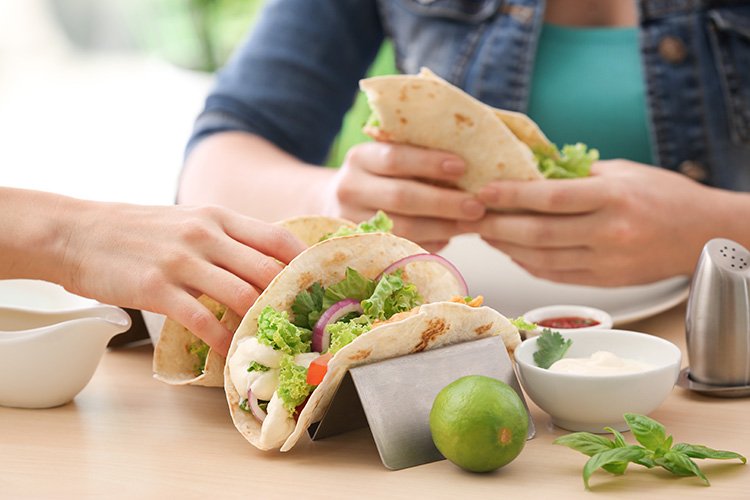As the U.S. continues to diversify — and as native-born Americans continue to expand their food horizons — demand for tortillas and flatbreads will continue to grow.
Within the next two generations, according to the U.S. Census Bureau, the country’s Latino population is expected to more than double. By 2040, Hispanics will likely account for about a quarter of the U.S. population (the current figure stands at about 18%).
Tortillas are already the second-most popular bread type in the U.S., and their popularity will only increase, thanks to existing demographic and gastronomical trends.
While tortillas are traditionally associated mainly with one culture, variations on flatbread can be found in Greek, Indian and Hispanic cultures. All three of those are hot ethnic food markets in the U.S. right now, and flatbreads are similarly hot, bucking many of the trends (anti-carb, anti-gluten) that have hurt the bread industry as a whole.
In short, it’s a good time to be in the tortilla and flatbread business.
“A rapidly growing Hispanic market, new flavor innovations and a growing demand for more ethnic-inspired and on-the-go meal options have contributed to the popularity of tortillas and flatbreads,” said Abby Ceule, senior industry director, global bakery, for Lenexa, Kan.-based Corbion. “Many manufacturers have expanded their product lines to include organic, low-carb, non-GMO, gluten-free and vegetable-based alternatives, which has also helped spur sales.”
Corbion is also tracking recent developments in wheat-based, dairy-free, reduced-fat and reduced-sodium tortillas and flatbreads, Ceule said.
Corbion offers a variety of tortilla, flatbread and pita bread bases — including solutions for large deli wraps, everyday applications and clean-label formulations — that help bakers improve the softness, freshness and rollability of their products.
Corbion’s Tortilla Supreme base, for example, helps reduce sticking and snapback of tortillas during production. And the company’s Tortilla Suave GR conditioner combines a balanced blend of ESL technology and anti-stick ingredients that reduce stickiness, improve softness and increase tortilla rollability.
“As our customers’ needs have evolved over the years, we’ve updated our portfolio to better fit their specific formulation requirements and consumer demands,” Ceule said. “We understand the manufacturing process is a critical factor in developing quality products, so our technical support team works directly with customers to integrate our solutions and ensure desired results.”
Sales trending up
Corbion expects sales of flatbreads and tortillas to rise as consumers increasingly look for ways to make more nutritious choices while feeding their love for bread.
They’re not alone. According to Mintel research, two-thirds of Americans said they like to try new bread varieties, and 57% said they enjoy sampling bread products from other cultures or regions.
Annual U.S. sales of tortillas exceed $14 billion, and more and more of them are being made in the U.S. The domestic industry was worth about $4.5 billion in 2018, up from $3.1 billion in 2010, and is expected to rise to $4.8 billion by 2022.
The standard 12-inch model continues to be the top performer in the tortilla industry. It’s a perfect fit for burritos and big wraps. But for many tortilla makers, demand is surging at the other end of the spectrum. Four-inch tortillas, for example, are a perfect fit for snacking trends — e.g. sliders — and for the red-hot street taco market.
New flatbread offerings from industry leaders include pre-grilled flatbread that has the appearance of a cooked panini; organic and bite-sized naan (an Indian flatbread); appetizer flatbreads; and organic, sprouted and gluten-free versions.
Flatbread variations on pizza crusts also have become more popular. With pizza, consumers can experiment with ethnic and other more exotic fare while staying in the comfort zone of a familiar culinary favorite. It’s a market Corbion and others are keeping a close eye on.
“While calorie-conscious consumers may not find a great savings in choosing flatbread over traditional sandwich bread, they may find its use as a pizza base to be a more manageable way to control portion sizes while layering on flavor,” Ceule said.


